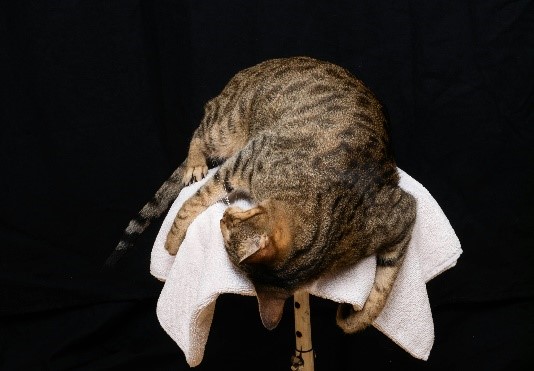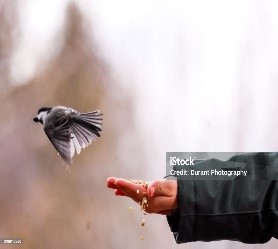The New Flu - What Our Cats Want Us to Know

The New Flu – What Our Cats Want Us to Know

Influenza concerns abound this time of year. For decades we have known that influenza A strains that infect humans can infect our feline friends, and rarely dogs. However, one strain in particular is posing more of a risk to our feline friends than is typical and is currently a hot topic in the media. The virus is a form of avian influenza A (H5N1). The H stands for hemagglutinin, and the N stands for neuraminidase. These are surface proteins used by the virus to infect cells and spread. It is used for classification and distinction of individual flu viruses. H5N1 infection can infect dogs, but it is much less common and very rarely does it produce any signs of illness.
In March of 2024, an outbreak of avian influenza A (H5N1) began in the United States in dairy cattle. Since that time numerous cats within the country have contracted the disease. This includes outdoor barn and feral cats, indoor cats, big cats in captivity and zoos, and cat species in the wild. As of March 2025, states with documented cases of H5N1 in any species include: Arizona, California, Colorado, Idaho, Iowa, Kansas, Michigan, Minnesota, New Mexico, New Jersey, North Carolina, Ohio, Oklahoma, Oregon, South Dakota, Texas, Washington, Wisconsin, Washington, and Wyoming. Our great state of Wisconsin has reported cases of H5N1 in wild birds, commercial and backyard poultry, dairy cattle, humans, and cats. Dane County recently had a confirmed case of H5N1 in a cat, bringing this disease right to our very own backyards.
Unfortunately, this particular virus is proving to cause more severe illness in cats than typical, often resulting in death. It is not currently known if transmission can occur between cats, but it may. Thankfully the risk of cat – to - human transmission is considered extremely low. It is currently thought that the risk to humans may increase with prolonged, unprotected exposure to infected animals. A report of H5N1 – infected cats indoors in the households of two dairy farm workers suggests human- to – cat transmission can occur. However, this has not been directly proven.
What are the signs to watch for in cats?
- Initially loss of appetite, lethargy, and fever. But these are also nonspecific signs of MANY different illnesses that can infect cats.
- Progression to SEVERE respiratory signs of nasal congestion, sneezing, coughing, trouble breathing. Keep in mind that the vast majority of cats with these signs are suffering from one of the various other extremely common viruses or bacteria that typically cause these signs in cats.
- Progression to additional neurologic signs (e.g., stumbling, clumsiness, circling, tremors, seizures, or blindness.)
What should cat owners do if they suspect H5N1 infection in their cat?
- Don’t panic. There are numerous other common causes of respiratory disease in cats.
- If your cat is fed a raw diet, has access to the outdoors, drinks raw dairy products, or is displaying both respiratory and neurologic signs, take the following precautions.
- Isolate your cat to the indoors in one room and away from other pets
- Call your veterinarian and discuss the signs you are seeing and make an appointment. Letting us know ahead of time (even for typical infectious respiratory diseases) allow us to take precautions to limit exposure to other pets in the clinic.
- Limit your cat’s exposure with immunocompromised individuals if possible.
- Visit the Centers for Disease Control and Prevention (CDC) website and follow recommendations for protecting non- immunocompromised family members.
- Report any human illness observed in short succession of your cat’s illness to your local public health official.


How are Cats Becoming Infected?
- Ingestion of raw milk, colostrum, or cream (unpasteurized)
- Ingestion of raw or undercooked poultry (e.g., chicken, turkey, duck), or beef.
- Exposure to infected wild birds or poultry, including backyard chickens.
- Exposure to infected livestock and their environments.
- Exposure to farm workers and their clothing, shoes, or other fomites (inanimate objects contaminated with the virus).




Indoor only cats are most frequently being infected by commercially prepared raw foods fed by their owners. With the explosion of pet food options in the last decade this highlights why most veterinarians strongly dislike the trend of feeding raw food to pets. In addition to the risks of E. coli, Listeria, and Salmonella, H5N1 is now added to the list of pathogens directly infecting pets fed these types of diets. Unfortunately, it is not always easy to tell if you are feeding a raw food or treat to your pet. Look carefully for the following terms or buzz words to AVOID.
Avoid Food or Treats Labeled
- Freeze Dried – this does not kill bacteria and is actually how some microbiologists preserve bacteria.
- Air Dried – also does not kill bacteria
- BARF – Biologically Appropriate Raw Foods
- PMR – Prey Model Raw
It is, however, safe to feed fresh refrigerated food as long as it states that it has been cooked.
How Can We Prevent H5N1 in cats?
While we have a bivalent flu vaccine for H3N2 and H3N8 for dogs. There is no vaccine available for H5N1 or approved in cats currently.
- Avoid exposure to or feeding unpasteurized milk or dairy products
- Avoid feeding raw meat-based food or treats to pets and thoroughly cook any meat or eggs you feed your pet.
- Keep your cats indoors to minimize exposure.
- Wash your hands well after handing poultry, livestock, wild birds, bird feeders and bird baths prior to interacting with your cats.
- Change your shoes or immediately disinfect the soles of your shoes before entering your house if you walk in areas where poultry congregate or wild birds frequent.
- Change your clothes and shoes and wash all exposed skin if you have interacted with sick or dead animals prior to interacting with your cat.
- Reconsider bird feeder locations near open screened windows or patios where cats spend time. Or take them down altogether until this epidemic passes.
Our goal at Countryside Animal Clinic is to help educate and spread awareness. In keeping vigilant and aware we can help protect ourselves and our pets. Please reach out to us if you have further questions on H5N1 in our pet population.
Sincerely,
Dr. Trisha Metzger (and the rest of the furry critter protection team at Countryside Animal Clinic)
.jpeg)
References Cited in the creating of this article: Feline Veterinary Medical Association (FVMA), American Veterinary Medical Association (AVMA), Centers for Disease Control (CDC), United States Department of Agriculture Animal Plant Health Inspection Servis (USDA APHIS), Wisconsin Department of Health Services, and University of MN CIDRAP.
